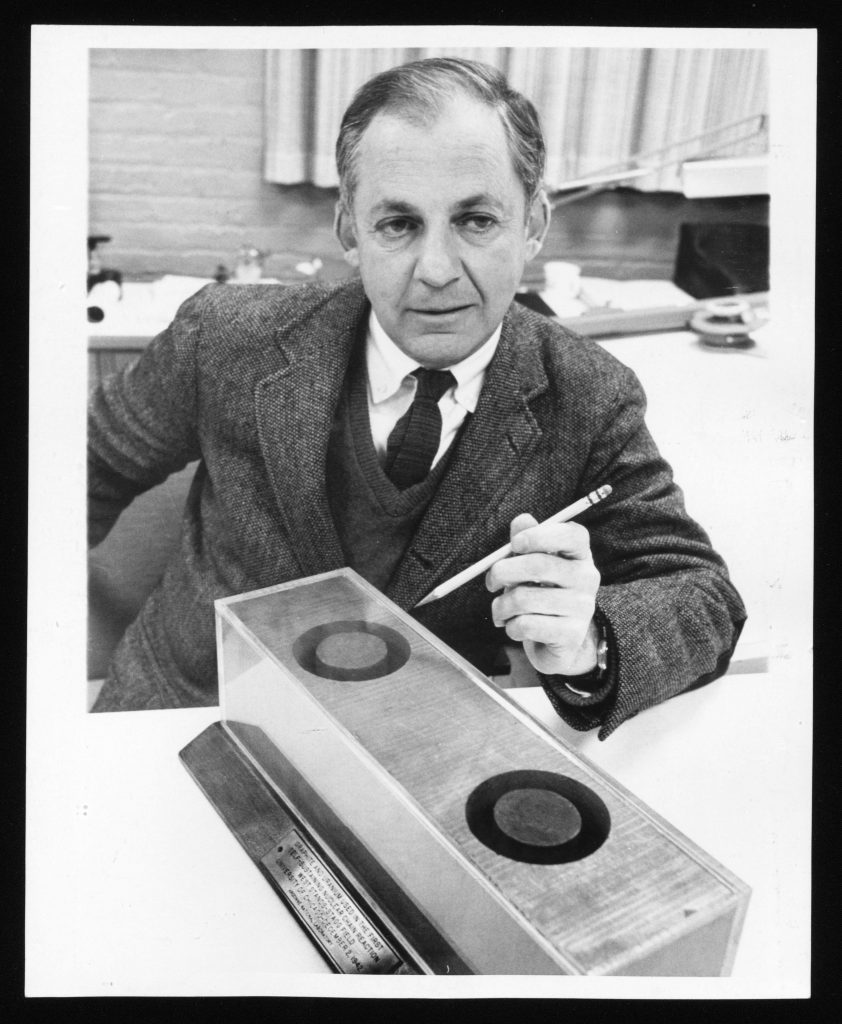Herbert L. Anderson (1914-1988) was an American physicist.
In December 1938, while Anderson was completing his Ph.D. in physics at Columbia, the German chemists Otto Hahn and Fritz Strassmann reported that they had detected the element barium after bombarding uranium with neutrons (the discovery was termed “nuclear fission” by Lise Meitner). Word of the discovery made it to Niels Bohr, who immediately traveled to New York to seek out Enrico Fermi at Columbia. Not finding Fermi in his office, Bohr went down to the basement of Pupin Hall in the cyclotron area and found Anderson. Bohr grabbed him by the shoulder and said: “Young man, let me explain to you about something new and exciting in physics.”
After Bohr had left, Anderson found Fermi at work in his office and proceeded to explain his conversation with Bohr to Fermi. Anderson then pointed out to Fermi that he, Anderson, had the equipment necessary to do the experiments but would need a sponsor for his thesis. Fermi accepted his proposition, and on January 25, 1939, Anderson became the first person in the United States to demonstrate the large energy release in the fission of uranium. This was a monumental achievement for nuclear physics and was crucially important to Anderson’s 1941 thesis, “Resonance capture of neutrons by uranium”, which was not published until ten years later for reasons of national security.
It was while Anderson was completing his graduate studies in physics in 1939 at Columbia University that he began a close scientific and personal association with Enrico Fermi. Anderson assisted Fermi in early research on nuclear fission, including Fermi’s direction of the first chain reaction. The two men worked together at the Argonne Forest near Chicago on design features of the Hanford reactors.
The collaboration between Anderson and Fermi at Columbia led to a most rewarding relationship. Together, the two conducted a series of experiments at Columbia on the fissioning of uranium, slowing down of neutrons in graphite, absorption and reflection of slow neutrons by numerous materials, and experiments involving a lattice of uranium in graphite.
Andersen’s first contribution to the Manhattan Project came at the Metallurgical Laboratory at the University of Chicago in February 1942. It was there that he, Fermi, and Wally Zinn became the leaders in the construction and design of the first man-made nuclear chain reaction, achieved in the racquet court under Stagg Field. The experiment, known as Chicago Pile-1, went critical on December 2, 1942. Following this, Anderson led the construction of CP-2 at the Argonne site in 1943 and was an important consultant for DuPont in the construction of the Hanford B Reactor, which produced the plutonium that would be used in the Fat Man bomb.
In 1944, Anderson left Chicago and went to Los Alamos to help solve the problem of determining the critical mass of U-235 needed for the atomic bomb. After the Trinity test on July 16, 1945, Anderson and his team of radiochemists devised methods for determining the yield of the device by collecting fission products from the crater under the tower on which the device had been detonated.
Profile Photo is courtesy of University of Chicago Library Guide to the Herbert L. Anderson Papers 1911-1988, Photograph Section, through a search conducted by David A. Wargowski.





